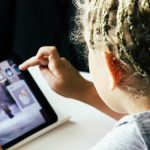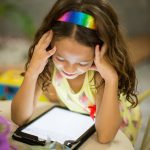A response to the article, The Substitution Augmentation Modification Redefinition (SAMR) Model: A Critical Review and Suggestions for its Use, by Erica R. Hamilton, Joshua M. Rosenberg, and Mete Akcaoglu.
SAMR model provides educators a hierarchical continuum system of integrating technology in mainstream education. According to Hamilton, Rosenberg, and Akcaoglu (2016) the SAMR model focuses on the technology itself rather than best practices of teaching. This representation is often misleading educators rather than enhancing their pedagogy and practice of using technology in the classroom. In the article The Substitution Augmentation Modification Redefinition (SAMR) Model: A Critical Review and Suggestions for its Use, articulates three challenges of the SAMR model.
- Absence of context
The SAMR model lacks accommodation or support for resources, individual support for student needs, and teacher support for technology. Prior research indicates context contributes to different educational outcomes which are central to both research and practice and is important for understanding and explaining motivation, development and teaching and learning (Hamilton et al. 2016).
Teachers impact learning and the decisions they make impact student learning. Teacher learning and practice and student learning experiences are contextual and embedded within complex experiences. SAMR does not acknowledge context, adversely connecting it to teaching practice and research (Hamilton et al. 2016).
- Rigid structure
The SAMR model is structured in hierarchical levels that represents technology integration in four categories. It does not acknowledge the complexity of teaching with technology but rather defines and organizes teachers use of technology in predefined ways. The SAMR model is not fluid, therefore teachers align themselves in the order of the continuum of the model. This idea lacks the focus of using technology to enhance student learning and teacher best practices (Hamilton et al. 2016).
- Product over Process
Instruction is about beginning and ending with learning objectives and learning outcomes, and the goal changes based on the learning processes. In the SAMR model technology integration is simplified and the goal is centered around changing the product rather than the learning process. This may not enhance student learning. It is important to consider education as a process, rather than education as the production of stand-alone products (Hamilton et al. 2016).
From what I gathered from the article, the SAMR model does not have an educational goal indicated to enhance student learning outcomes. It is important for educators like me to understand how to use technology to promote student learning and achievement. It’s also important to first understand the relationship between teachers and technology and learning to promote student growth and accomplishment. These relationships are vital to the success and use of technology to support and enhance student learning (Hamilton et al. 2016).
Something that I must reflect on in my practice is:
Is the technology that I am using in my classroom adding value to what I am doing?
When technology is used appropriately then the tools we use can help student learning. A few key questions that Paul Emerich France highlights in his article, What the SAMR Model May Be Missing, are questions to help educators think about whether the technology used in the classroom is enhancing student learning.
- Does the technology help to minimize complexity?
- Does the technology help to maximize the individual power and potential of all learners in the room?
- Will the technology help us to do something previously unimaginable?
- Will the technology preserve or enhance human connection in the classroom?
According to France (2018), social media is a modern-day breakthrough in human connection and communication. I use an online platform called FreshGrade in my class. It is a digital portfolio that allows for human connections between teacher, student and parent. This tool is excellent for students to share their pictures, videos and assignments. This tool is meant to showcase learning in the classroom and to share with parents at home. For now, I am going to reflect on the questions that France provided in his article to make sure that the apps I am using are going to enhance and optimize student learning!
France, P. E. (2018, October 18). OPINION | TECHNOLOGY TIPS. In What the SAMR Model May Be Missing. Retrieved from https://www.edsurge.com/news/2018-10-18-what-the-samr-model-may-be-missing
Mayer, R. E. (2017). Using multimedia for e‐learning. Journal of Computer Assisted Learning, 33(5), 403-423.





mrsandersenswestcoastclassroom
October 6, 2019 — 11:18 pm
Thank you for sharing the article by France. The questions he asks are more significant to me as an educator than the SAMR model.
laucoo
October 7, 2019 — 9:32 am
Hi Sara, thank you for sharing! I like the questions you posted from the article you found. I too will ask myself these questions, especially when deciding on using certain apps in my classroom!